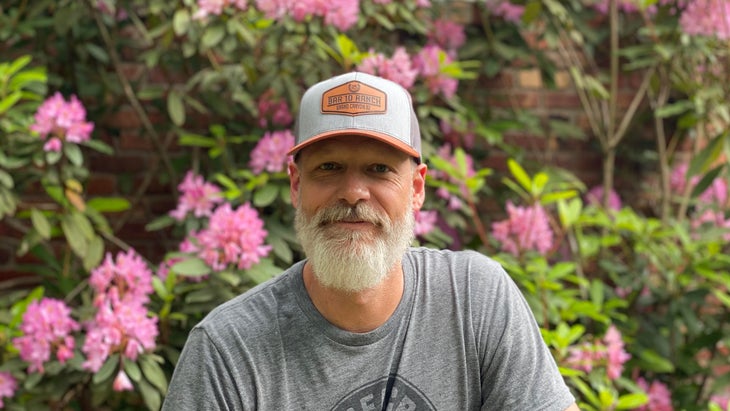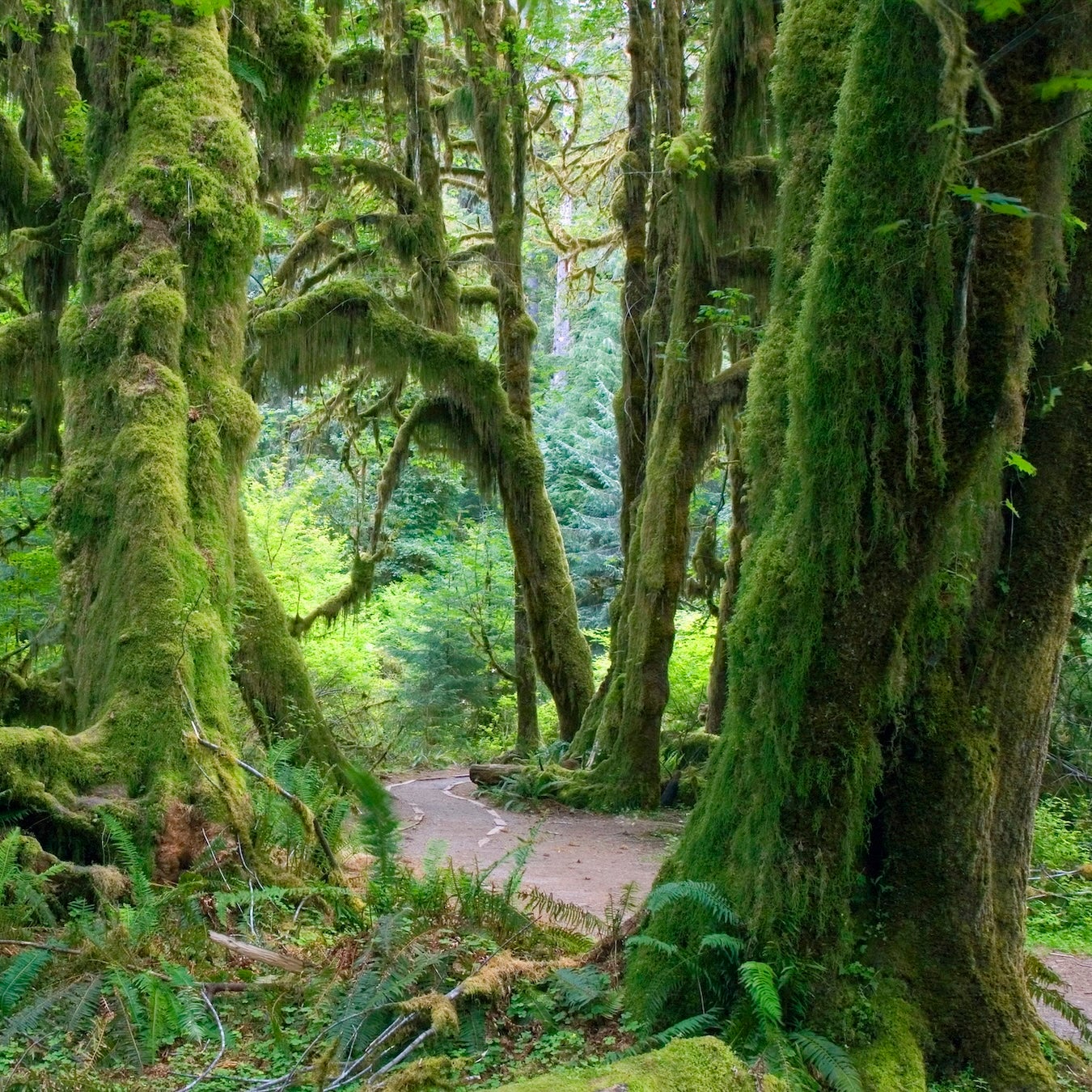The modern world is not quiet. Or maybe I should say:��people are not quiet. I live in a small mountain town, which you might expect to be an entirely peaceful habitat. But from my yard, throughout the day, I can hear cars on the interstate, kids playing, delivery trucks backing up—it’s a constant barrage of background noise that has become so much a part of our lives. I’m actually uneasy when I experience truly quiet situations.
Recently, I was camping alone in Utah, at the base of a canyon near Grand Staircase-Escalante National Monument, which is several miles from the nearest road. The silence was all-encompassing. Occasionally, I could hear the wind move through a sandstone channel behind my campsite, but otherwise, there was no noise. The sound of silence was so far from my status quo that it was disconcerting. No bugs. No fire crackling. Just…me.
But we need that quiet in our lives. Studies show that experiencing even brief periods of silence can help lower , improve , and even stimulate . As the world becomes noisier, more people are in search of silence, with “quiet-cations” becoming one of the hottest trends in .
The good news? There are still places where you can go to find total quiet, or at least places where the only sounds you hear are from nature: birds, crickets, wind rustling trees.
is a non-profit that researches and certifies locations all over the world based on the decibel levels of background noise (background noise in certified quiet locations doesn’t exceed 45 decibels).��I selected some enticing destinations deemed Quiet by the organization and scoured our public lands, looking for broad swaths of wilderness that are located so far from noisy roads and towns that they’re bound to be silent.
Here are 9 hush-hush destinations for your next quiet adventure.
1. Big Bend Ranch State Park, Texas
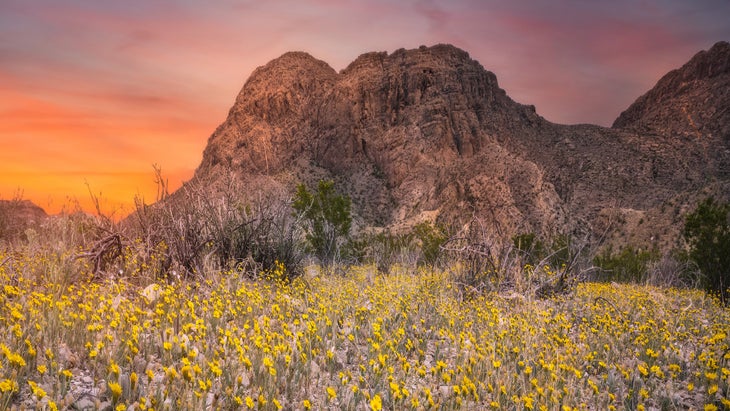
There’s West Texas, and then there’s Far West Texas, a remote corner of the state near the Mexican border. Once you hit Far West, keep going, and you’ll find Big Bend Ranch State Park, a massive (311,000 acres) swath of mountains, canyons, and desert along the Rio Grande. Together with its neighbor, Big Bend National Park, Big Bend Ranch makes up the largest International Dark Sky Reserve in the world. The lack of ambient light pollution that delivers dark skies also means there’s a lack of ambient noise, contributing to quiet days. I spent several days exploring Big Bend Ranch on a mountain bike a few years ago and saw more road runners than people.
There are more than inside the park, some of which meander past old movie sets, Native American homesites, and the occasional oasis, not to mention more canyons and cacti��than I could count. Your best bet is to saddle up on a mountain bike ( has rentals from $50 a day) and pedal the 60-mile that combines singletrack, dirt roads, and dry creek beds to deliver you deep into the heart of the park. There are multiple bail-out options along the way if you don’t want to tackle the full route.
What to Listen For: The sound of a small waterfall (the Epic route passes by an oasis) and the neigh of feral donkeys that live within the park.
2. Olympic National Park, Washington
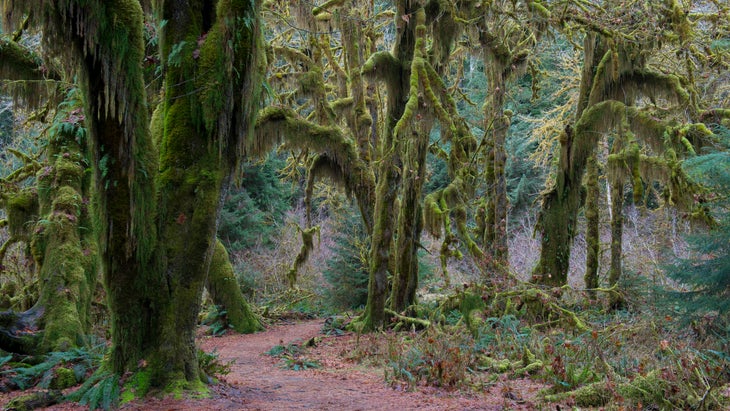
The last time I was in Olympic National Park, I was riding a bike, so I mostly heard the sound of my own heavy breathing as I tried to keep up with my group. But this is the park that inspired acoustic ecologist Gordon Hempton to create Quiet Parks International in an attempt to preserve peaceful places. It’s a big park with a diverse landscape that ranges from craggy coastline to glaciated peaks, so there’s plenty of space to spread out and find your own slice of peace and quiet.
I’ve spent near-silent afternoons paddling Lake Crescent with no soundtrack but my paddle strokes, and lonely stretches of beach offer opportunities to give yourself over to the sound of crashing waves. But it’s the Hoh Rain Forest, a 24-square-mile temperate rain forest on the west side of the park, that’s the most intriguing from a sonic experience. Giant old growth conifers rise towards the heavens while thick ferns and mosses blanket the forest floor, all combining to dampen sound.
The , an .8-mile loop near the Hoh Rain Forest Visitor Center, is the easiest way to experience the landscape, the trail’s namesake moss climbing the trunks of the trees throughout the area. If you want to explore further, hike a piece of the 17-mile Hoh River Trail to Glacier Meadows, which offers a view of Mount Olympus. Most day hikers turn around at Five Mile Island, making it a that will definitely get you away from the crowds.
What to Listen For: The babbling Hoh River will, unsurprisingly, accompany you on the Hoh River Trail. Also, keep an ear out for bugles from the herd of elk that live in the rainforest. And then there’s the rain; Hoh gets 12 feet of it per year.
3. Mount Tabor Park, Portland
You don’t have to leave the city for peace and quiet. , a 175-acre park on the eastern edge of Portland, was named the country’s first by Quiet Parks International in 2023. Mount Tabor is a popular park, and during the certification process, acoustic engineers recorded background noise between 38 and 43 decibels, which is just below the threshold for what Quiet Parks International considers quiet. But Mount Tabor’s accessibility to such a large and diverse population gave it the edge for the final designation.
Mount Tabor itself is a dormant cinder cone volcano, the shape of which helps isolate background noise. So, if one section of the park is noisy, you can trek to the other side for a more subdued experience. The park’s 53 tree species, including a dense Douglas fir forest, help absorb some of the ambient noise as well. Mount Tabor has six miles of official trail and nearly the same length of social trail. Hiking the mile-long Red Trail and looking for a quiet path into the woods is your best bet for silence.
What to Listen For: Children playing. It’s an urban park with playgrounds, and the sounds of children playing are among the best human-made sounds on earth.
4. Niobrara National Scenic River, Nebraska

The Niobrara River begins in Wyoming and runs more than 500 miles before joining the Missouri River, but a particularly gorgeous 76-mile stretch has been designated a National Scenic River thanks to its outstanding beauty. Here, the Niobrara passes through the Sandhills of Nebraska—rolling mounds of sand dunes stabilized by permanent grass and grazed upon by elk—while also carving a path through the occasional sandstone cliff. The river is fed by hundreds of natural springs, some of which tumble into the Niobrara as waterfalls. You’ll find the 63-foot Smith Falls, the tallest plunge in the state, along this designated National Scenic River.
The Niobrara National Scenic River has also earned the distinction of being the first certified from the Quiet Parks organization. The best way to explore the river and experience the soundscape is from the hull of a canoe.��Most of the land surrounding the river is private ranch land, but the nine-mile stretch through the�� just east of Valentine offers a scenic and mellow run with the chance to hop out of the boat and hike the refuge.�� has canoe rentals (from $69).
What to Listen For: Waterfalls, the sound of your paddle in the water, and waterfowl overhead.
5. Dixie National Forest, Utah
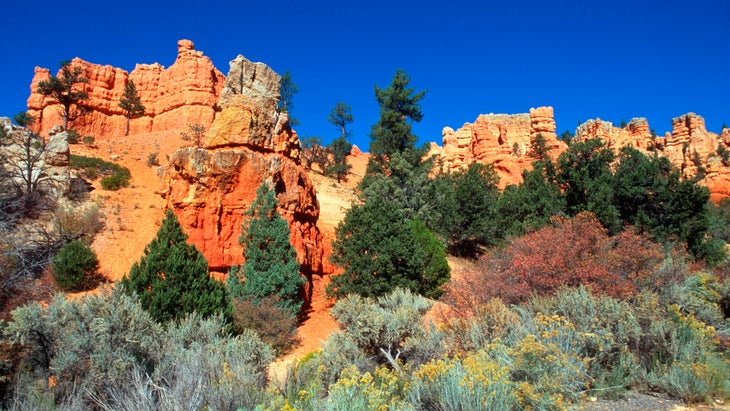
The is huge, occupying almost two million acres of aspen-topped mountains and red sandstone canyons in Southern Utah. Maybe more important from a sonic perspective, those two million acres are buffered by Capitol Reef National Park and Grand Staircase-Escalante National Monument, so the forest sits in the heart of a massive complex of public lands that has very few auditory distractions. I spent a week backpacking through Dixie and Grand Staircase and didn’t come across a single person outside of my small group. The only thing I heard was the wind whistling through the aspens and the occasional elk bugle.
Elevations in the forest range from 11,322 feet at the summit of Boulder Mountain to just under 3,000 feet, and the ecosystem shifts with the altitude. Up high, you’ll find dense groves of aspens and evergreens and boulder-choked creeks. Down low is slick rock desert with narrow canyons and steep cliffs.
The Escalante Ranger District of Dixie has a robust trail system offering relatively easy access to solitude from the small town of Boulder. Pick up the Slickrock Trail northeast of town for a pleasant walk through a high-elevation spruce forest. If you really want to get away from it all (and you have solid route-finding skills), look south to one of the many canyons that drop from the ridge, traveling through a remote corner of the forest before entering Grand Staircase Escalante National Monument.
What to Listen For: The wind rustling through the aspen leaves at higher elevations is a delightful sound.
6. Green Bank and Spruce Knob, West Virginia
At least part of the joy of finding quiet places is embracing the notion of getting offline. No cell phones, no social media, no buzzing alerts on your phone—that��disconnection is what makes the small town of Green Bank, West Virginia, so damn appealing. It sits in the heart of a 13,000-square-mile National Radio Quiet Zone, which is a federal designation that bans all wireless tech. No radio, no cell service, no wi-fi. The rule is in place to remove any potential interference with the seven telescopes pointed skyward.
The Observatory is cool, but the Quiet Zone also encompasses some intriguing portions of the Monongahela National Forest, including 4,863-foot Spruce Knob, the tallest mountain in West Virginia. Hike the easy .5-mile Whispering Spruce Trail for a loop around the summit and views of Seneca Rocks, a fin-like sandstone outcropping that’s popular with climbers. If that nature trail isn’t quiet enough for you, hike deeper into the Spruce Knob-Seneca Creek Backcountry, where 60 miles of trail explores meadows, streams, and hardwood forests. Pick up the 5.2-mile at the summit and drop 1,000 feet of elevation off the ridge into fields of wild blueberries and huckleberries until you reach Seneca Creek.
What to Listen For: The wind whipping through the forest at the summit, so strong and constant that the peak’s red spruces have become deformed and only have branches and nettles on one side.
7. Frank Church-River of No Return Wilderness, Idaho
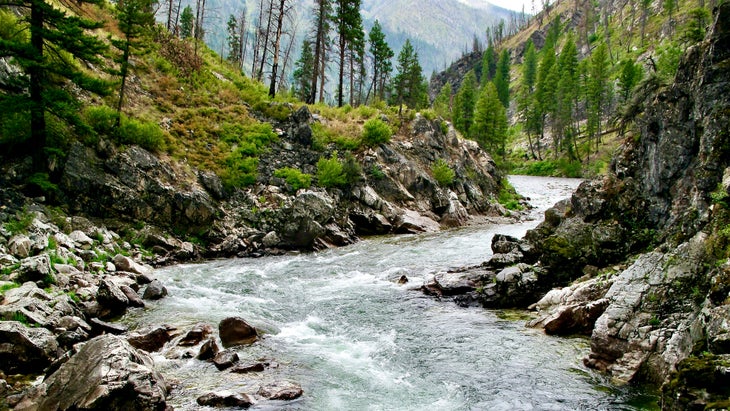
���岹���’s Frank Church-River of No Return Wilderness is the largest federally designated wilderness area in the lower 48 at a robust 2.37 million acres. That means if you’re standing in the heart of Frank Church, there isn’t a road or mechanical device within two million acres. Promising from an auditory perspective.
Most people experience Frank Church from the hull of a raft careening down the Salmon River, which is a bucket list adventure to be sure, but it’s not exactly the peaceful scenario we’re looking for here. I say lace up your boots and explore one of the primitive trails that traverse the Frank.
The hiking is tough (rangers recommend you carry a handsaw in case you need to clear any downed trees), but the offers an approachable entry into the wilderness. Pick up the trailhead at the Langer Monument on Beaver Creek Road and hike 2.1 miles to the aforementioned backcountry lake. The climbing begins immediately, gaining almost 1,000 feet in the first mile, but it levels out in a valley recovering from a previous wildfire. The lake itself is a 12-acre pond at the base of the craggy Roughneck Peak that is known to have feisty rainbow and cutthroat trout if you are so inclined.
What to Listen For: The sound of your fly smacking the water as you hunt patiently for one of the wild trout within the lake.
8. 100-Mile Wilderness, Maine
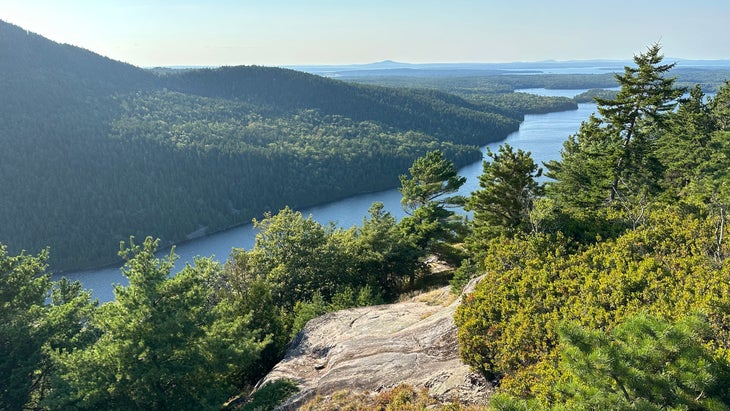
The 2,000-mile long Appalachian Trail, running from North Georgia to North Maine, is arguably the most famous footpath in the world. Some 2,000 people try to hike the entire thing every year, but most of them give up before they hit Maine. That means they never get to experience the 100-Mile Wilderness, the most remote stretch of the entire A.T., with no paved roads or towns along its corridor. The terrain is a mix of backcountry lakes, craggy peaks, and dense hardwood forests, with steep climbs and a tread that is notoriously rocky and rooty.�� So why bother, you ask? For the chance to take cold dips in backcountry lakes, spy 360-degree vistas from peaks, and experience real solitude, which can be tough to find on the eastern seaboard.
You could hike the entire thing if you’re looking for an epic adventure ( can help with logistics like shuttles and food drops), but if you don’t have the requisite week to 10 days this sort of effort requires, I recommend heading to the portion of the 100 Mile Wilderness. This is a 1,600-acre tract owned and preserved by Maine Audubon that offers day hikers a manageable intro to the wilderness via a handful of short trails. Hike the 1-mile , which follows the shore of a pond before climbing to the rocky, dual-peak summits of Borestone Mountain. From there, you’ll get a 360-degree view of the wilderness that, on a clear day, extends all the way to Mount Katahdin, the northern terminus of the A.T.
What to Listen For: It’s an Audubon preserve, so listen for the 10 warbler species that call the sanctuary home. Peregrine falcons are also known to soar near the craggy peaks, and moose are commonly found near the lakes.
9. Deer Haven, Badlands National Park, South Dakota
If you want to get away from the noise of modern life, heading to South Dakota is a good start; the entire state has less than a million residents, many of whom are huddled in Sioux Falls. Exploring Badlands National Park will get you even further from any ambient noise, as the park’s steep canyons, tall buttes, and thick red clay have appeared inhospitable to humans since the Lakota gave the area the “badlands” moniker. But tough terrain often equals quiet, as few visitors venture into the park’s backcountry.
Start at the Conata Picnic Area and pick up the , an unmaintained game trail that leads for 2.5 miles through grasslands and between buttes to a cluster of juniper trees. Bring a tent and find a primitive site either in the prairie at the base of the buttes or tucked into the junipers.
What to Listen For: Keep an ear out for the hooves of the 1,000-strong bison herd that roams this section of Badlands.
Graham Averill is �����ԹϺ��� magazine’s national-parks columnist. Based in Asheville, North Carolina, he is fortunate enough to live within a few hours of three free national parks. He recently wrote about the best hikes in Joshua Tree National Park, his favorite mountain town, and the national park he chose as the most adventurous.
